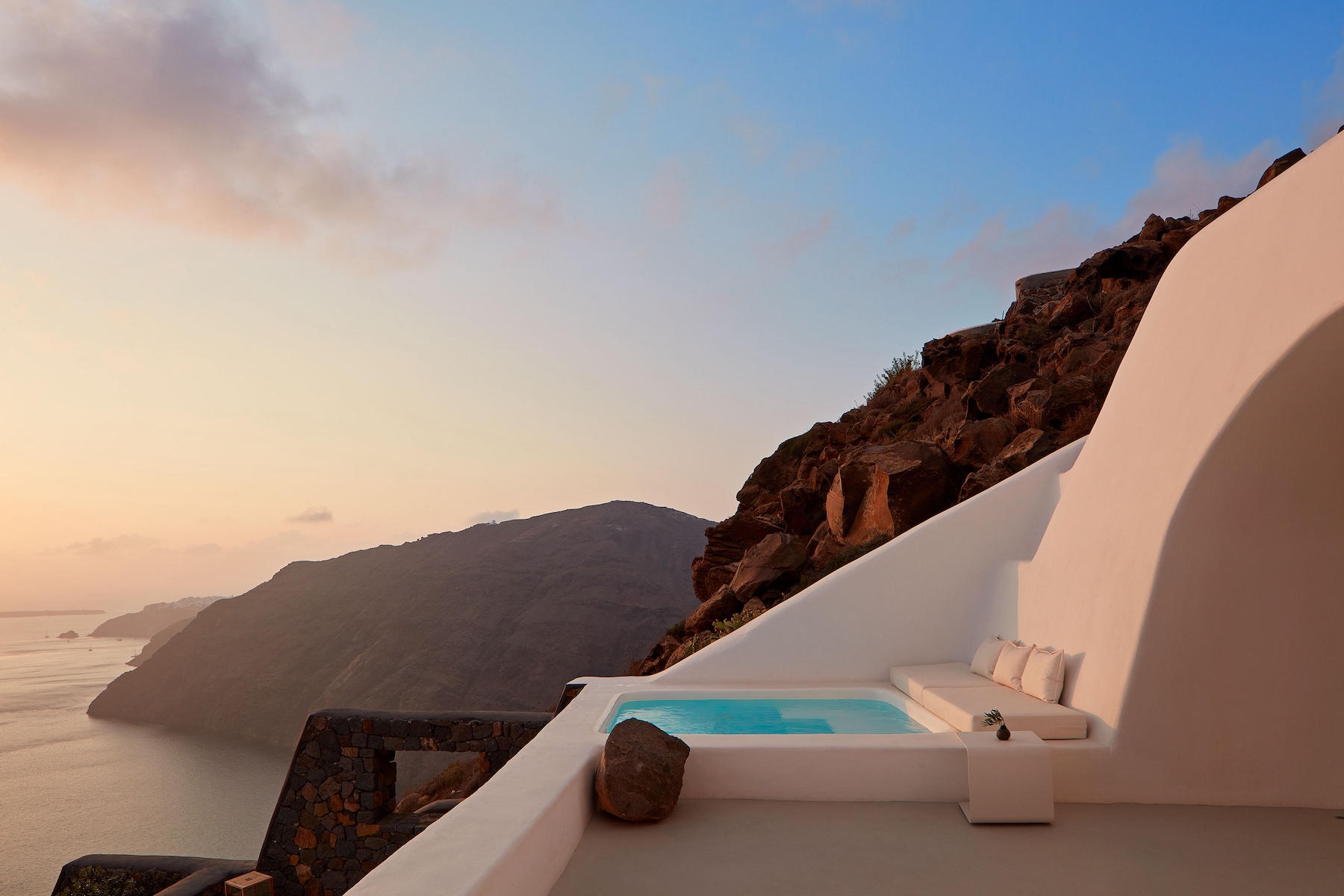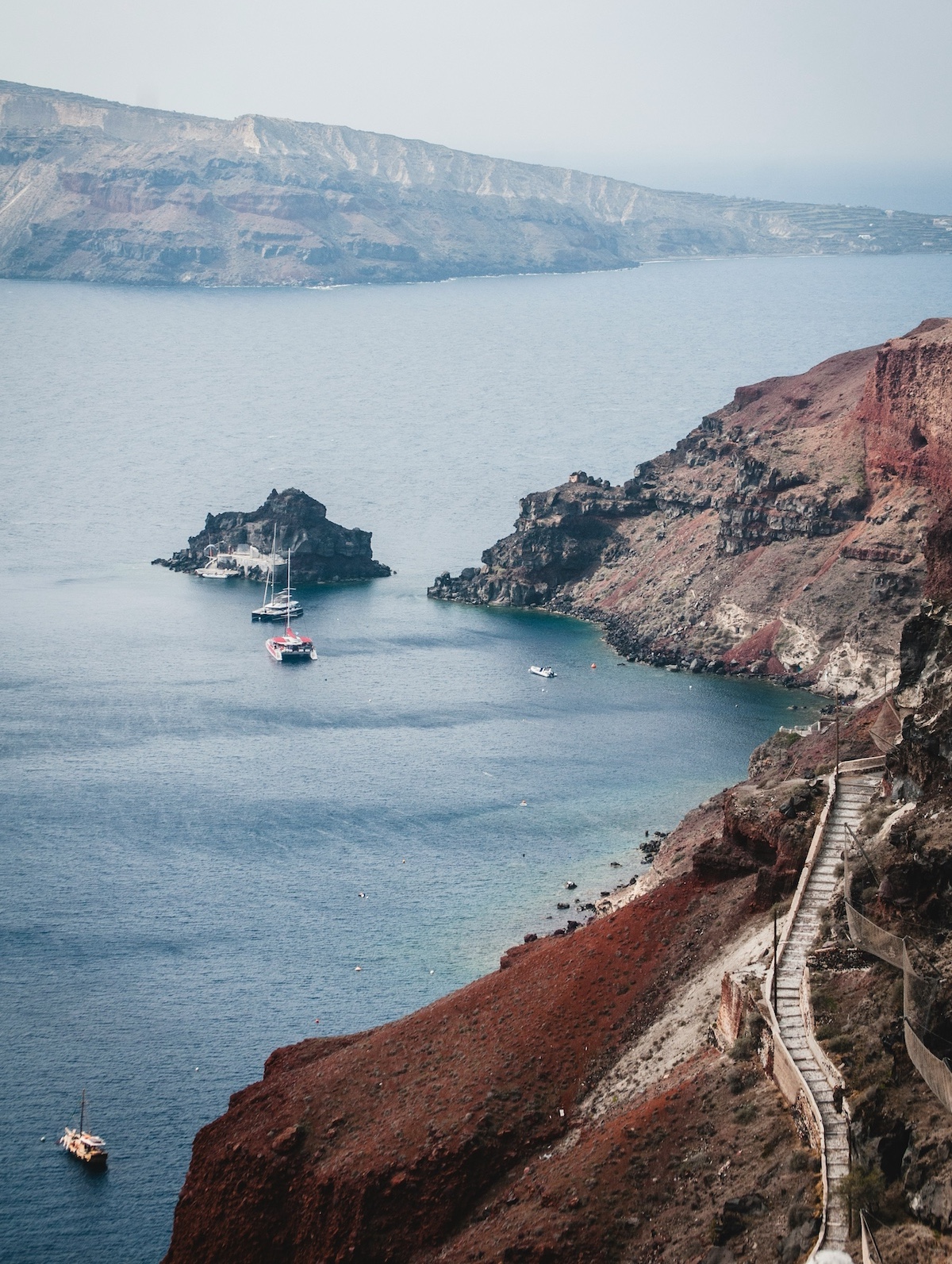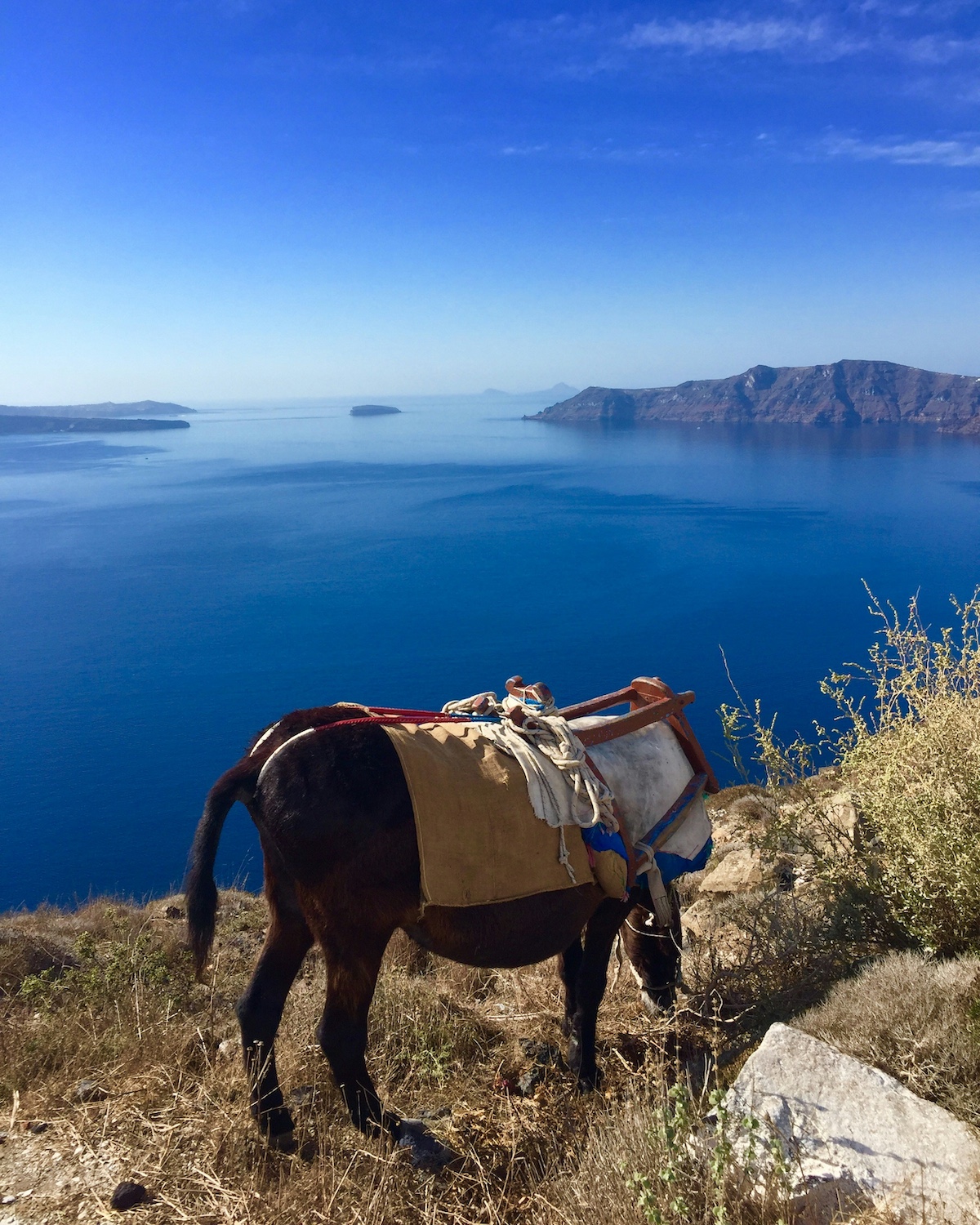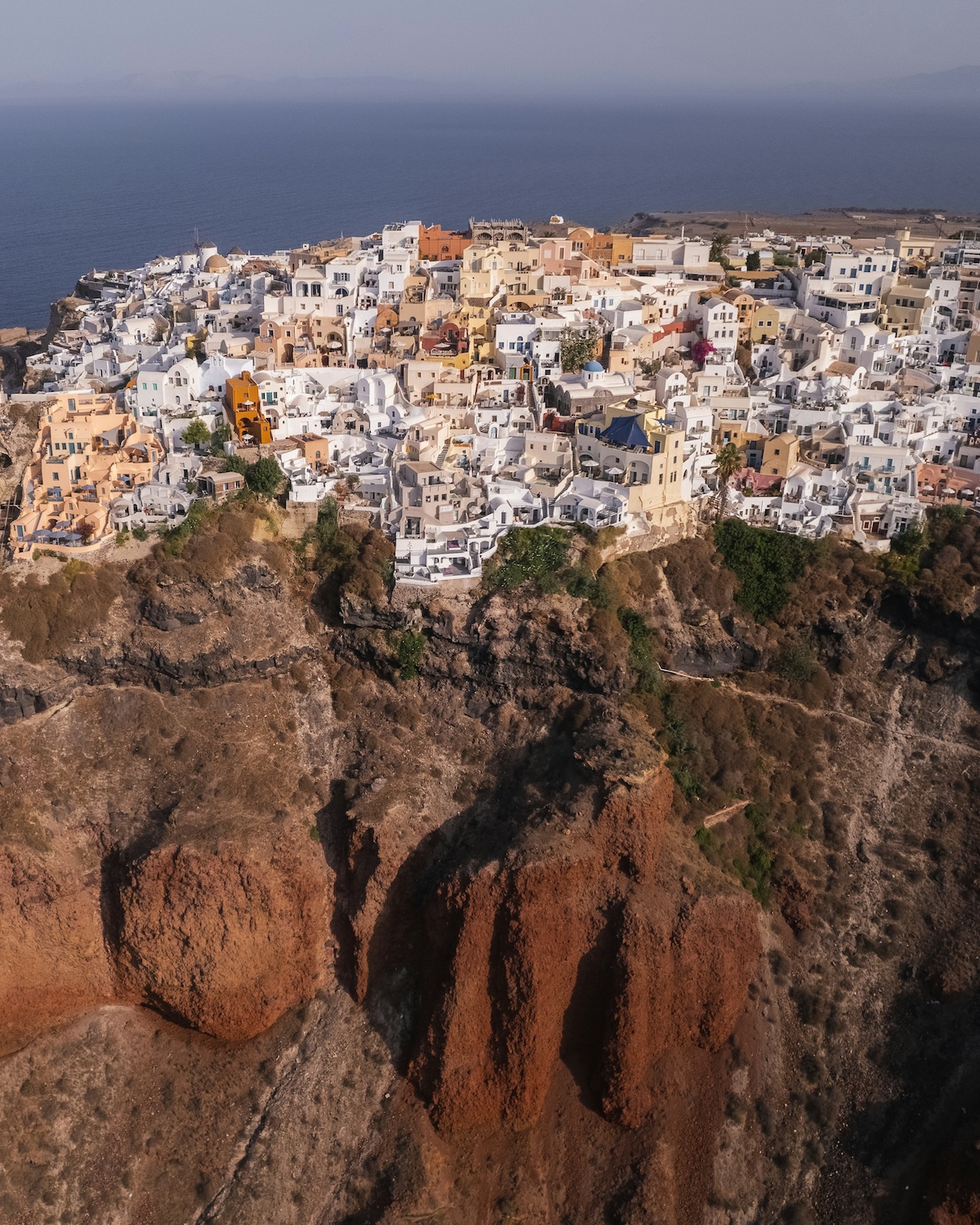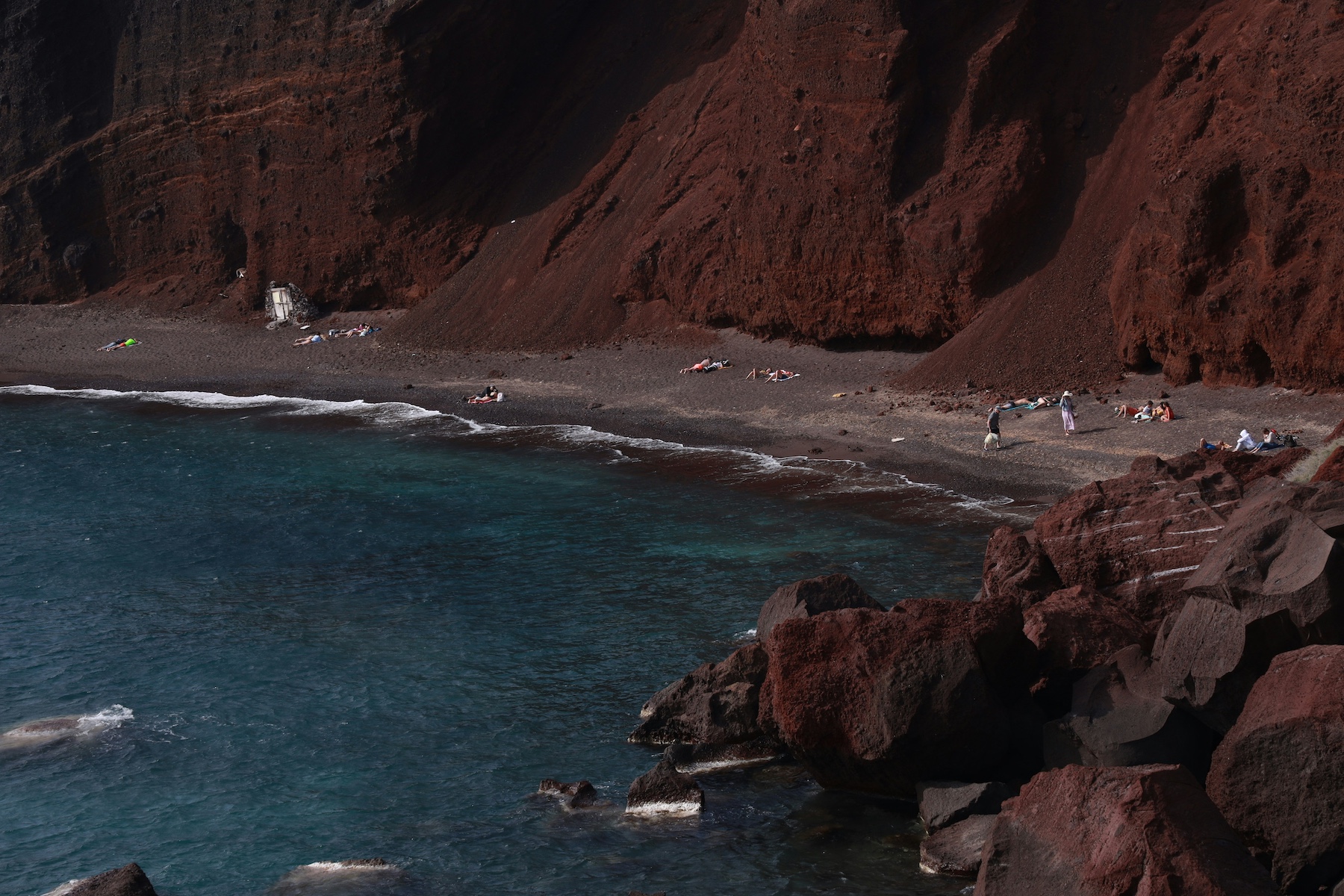JOIN the AFICIONADOS
Get the insider news and lowdown on what we've been up to, where we've been, and who we've met along the way. Be the first to discover new places and get the scoop on our favourites.
Santorini’s architecture rises from black volcanic cliffs like a minimalist sculpture, shaped by millennia of pressure and light. The island’s cubic houses, carved directly into the caldera walls, aren’t just Cycladic icons: they’re a response to the fierce terrain and searing light of the Aegean. Each whitewashed volume is a silent negotiation between sun and shadow, earth and sea. In Fira, the island’s capital, that tension becomes theatre: cascading terraces and vaulted arcades that curve around the caldera’s edge, where old churches and contemporary galleries share the same volcanic stone.
The caldera itself is Santorini’s defining drama, a vast, sunken amphitheatre of rock and sea, formed by a cataclysmic eruption around 1600 BCE that redefined the horizon and the island’s fate. It’s a spectacle of geological power, a void of stillness that’s anything but empty – a quiet, weighty presence that shapes every line of the island’s architecture. Staying with a front-row seat to this view isn’t a luxury – it’s the island’s story laid bare. At places like Aenaon Villas, where minimalist design meets ancient landscape, the caldera’s edge becomes an endless stage. In this place, every moment feels charged with the elemental hush of history and the theatre of light.
The language of architecture here is spare, elemental and unpretentious. In Imerovigli, domed chapels punctuate the skyline like punctuation marks; in Oia, light and line collapse into moments of near abstraction. Santorini’s structures are tactile poems in stone and limewash – a legacy of masons and makers who understood the island’s restless geology.
This is a land where the soil itself tells stories. Black volcanic sand, formed from aeons of eruptions, shapes not just the beaches; Perissa’s dark shimmer, Kamari’s pebbled stretch, Red Beach’s oxblood cliffs and the vineyards cling to these steep slopes. Here, the Assyrtiko grape is trained in koulouri baskets – a spiral of vines that shields the fruit from fierce winds and sun, a technique as old as the island’s myths. At wineries like Gavalas and Hatzidakis, time slows to the patient craft of amphorae and stone cellars, the wines cut with a mineral edge that speaks of salt air and ash.
Akrotiri – affectionately called the Pompeii of Greece – is another layer in this stratified landscape. Buried under volcanic ash for centuries, its frescoes and staircases remain intact: a silent archive of Minoan life that predates much of Europe’s built history. Santorini isn’t just an island, it’s an architectural and cultural palimpsest, where each layer of history, each block of pumice or lime, holds the weight of the ages.
This isn’t a place for passive visitors. Santorini asks you to lean in – to taste the salt in the air, feel the mineral bite in each glass of Assyrtiko and read the quiet poetry of the island’s forms. It’s a Cycladic icon, but also a testament to how design, landscape and human craft can shape a place where history still hums in every whitewashed curve – and where the caldera’s silent theatre of stone and sea pulls everything into its elemental orbit.
